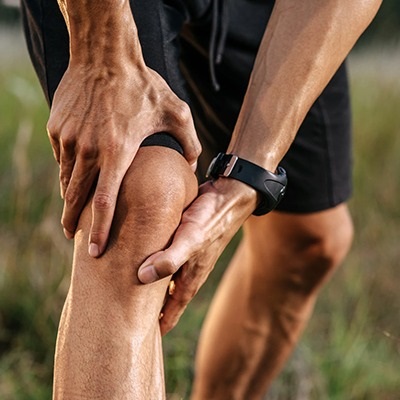[the_ad id=”6076″]
Arthritis is inflammation or swelling of one or more joints. Arthritis is a term that refers to joint pain or joint disease. This term is used to describe more than 100 conditions that affect joints, the tissues that surround the joint, and connective tissues. The causes of arthritis vary depending on the type. Arthritis is common in areas like feet, hands, hips, knees, and lower back.
The common symptoms of arthritis include joint pain and stiffness which typically worsen with age. The most common types of arthritis are osteoarthritis and rheumatoid arthritis.
What are the Types of Arthritis?
There are different types of arthritis. Common ones are mentioned below:
- Ankylosing Spondylitis: This arthritis affects the spine. It involves redness, heat, swelling, and pain in the spine or joint where the bottom of the spine joins the pelvic bone.
- Gout: it is caused by ‘uric acid’ crystals that build up in the joints. This typically affects the big toe but may also affect other joints.
- Juvenile Arthritis: this is commonly found in children. It is caused by inflammation of joints.
- Osteoarthritis: this type of arthritis usually comes with age and affects fingers, knees, and hips.
- Psoriatic arthritis: this can occur in people who have psoriasis. It affects skin, joints, and areas where tissues attach to bone.
- Reactive arthritis: This is pain or swelling in the joint that is caused by an infection in the body. In this condition, one may also also have red, swollen eyes and swollen urinary tract.
- Rheumatoid arthritis: this happens when the body’s defense system does not work properly. This affects joints and bones and may also affect internal organs and systems.
Symptoms of arthritis:
The symptoms of arthritis vary widely depending on the type. As arthritis is a chronic disease, symptoms may flare-up and subside, or may persist over time. However, anyone who experiences any of the symptoms below must seek help from a doctor.
- Pain in joints: pain during arthritis can be constant, or it may come and go. The pain can be felt in only one part or can be felt in many parts of the body.
- Joint swelling and tenderness: in some types of arthritis, the skin on the affected joint becomes red and swollen and feels warm to the touch.
- Joint stiffness especially in the morning: Stiffness is a typical symptom. In some types of arthritis, this is one of the common symptoms one experiences.
Other symptoms of arthritis include decreased range of motion, Groin pain, Symmetrical joint pain, and Stiffness in hands and feet.
What causes arthritis?
The exact cause of different types of arthritis is not fully known. For instance, gout is the result of too much uric acid in the body. But for most types of arthritis, the exact cause is unknown. You may develop arthritis if you:
- Have a family history of arthritis
- Play a sport that puts repeated stress on the joints
- Have certain autoimmune diseases or viral infections
There is no single cause of different types of arthritis. Possible causes may include:
- An injury that can lead to degenerative arthritis
- Abnormal metabolism, that causes gout and calcium pyrophosphate deposition disease
- The genetic inheritance which leads to developing osteoarthritis
- Lyme disease trigger arthritis symptoms
What are the risk factors of arthritis?
Common risk factors include:
- Family history: you may likely develop arthritis if your parents or siblings have this disorder.
- Age: With an increase in age, the risk of different types of arthritis i.e., osteoarthritis, rheumatoid arthritis, and gout persists.
- Gender: women are more likely to develop rheumatoid arthritis while most of the people who have gout are men.
- Previous joint injury: an individual who has injured a joint during any sports activity is more likely to develop arthritis in the injured joint.
- Obesity: carrying extra weight can put stress on joints, particularly on knees, hips, and spines. People who are obese are at a higher risk of developing arthritis.
How is arthritis diagnosed?
Your doctor will examine you and ask you about your symptoms. They will look for signs of arthritis or an autoimmune disease. Your provider may perform a physical exam which includes:
- Assessing mobility and range of motion in the joints
- Checking for areas of tenderness or swelling around joints
- Evaluating the overall health of the patient to determine if a different condition can cause similar symptoms.
Blood tests will be taken to look for signs of inflammation or other signs of arthritis. In some cases, a sample of fluid may be taken from a joint. X-rays, ultrasound, and CT scans may also be done to look for the loss of cartilage or narrowing of space in the joint.
Imaging exams can help healthcare providers get a clear picture of bones, joints, and soft tissues. These can show:
- Bone fractures or dislocations may cause pain in joints
- Cartilage breakdown around joints
- Muscle, ligament, or tendon injuries near your joints
- Soft tissue inflammation
Some specific types of arthritis are difficult to diagnose, so your doctor may refer you to a rheumatologist who specializes in conditions that affect joints.
How is arthritis treated?
There is no specific cure for arthritis but there are treatments that help in managing the condition. The treatment plan varies according to the severity of the condition, its symptoms, and overall health.
Let us have a look at some of the treatments:
- Medication: anti-inflammatory and pain medications help in relieving the arthritis symptoms. Some medications such as biologics target the immune system’s inflammatory response. These are recommended for rheumatoid or psoriatic arthritis.
- Physical therapy: rehabilitation helps in improving strength, mobility and also improves motion. Therapists can help you teach how to adjust your daily activities to lessen arthritic pain.
- Therapeutic injections: Cortisone shots help temporarily relieve pain and cause inflammation in the joints. Arthritis in joints such as the knee may improve with a treatment known as viscosupplementation. This injects lubricants to help joints move smoothly.
- Counterirritants: certain creams and ointments are helpful. Rubbing these on the skin over the painful joint can modulate pain signals from joints and lessen pain.
Healthcare professionals usually recommend certain surgeries for severe cases of arthritis. These are recommended when these conditions are not improved with conservative treatments. Surgical options include:
- Fusion: in this two or more bones are permanently fused together. Fusion immobilizes a joint and reduces the pain that is caused due to movement.
- Joint replacement: with artificial joint surgery, damaged and arthritic joints get replaced. Joint replacement surgery preserves joint function and movement.
Other surgery options include synovectomy, osteotomy, etc.
How to prevent arthritis?
You can lower the chances of developing arthritis by:
- Doing low-impact exercise
- Maintaining a healthy body weight
- Reducing the risk of joint injuries
- Avoiding tobacco products
- Avoiding repetitive work in the same joints such as excessive knitting or certain sports
Conclusion:
There are more than 100 types of arthritis. Some are caused by an overactive immune system and also affect multiple organs. Some forms of arthritis result from natural wear and tear. Your healthcare professional will assess the symptoms and also recommend the right treatment plan.

